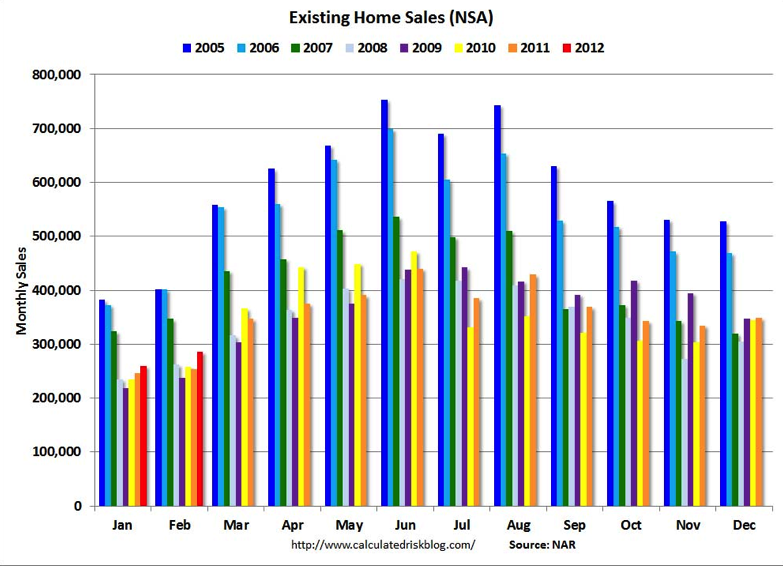
Who’d a thunk it? With China slowing substantially and Europe setting course for perpetual recession, the global economy’s fate this year hangs on the US economy and more particularly, a US housing recovery. Equity markets seem to believe in such an outcome. Respected local strategists like Shane Oliver are on board. Here’s an excerpt from a recent note:
While the secular bear market that began in US shares 12 years ago may have further to go, there are a number of positives suggesting there is light at the end of the tunnel. In particular, US housing appears to be bottoming.
…A recovery in US housing has several implications.
- First, by reversing a significant drag on the US economy it should help perpetuate a US economic recovery.
- Second, this is likely to be reinforced by a boost to US household wealth as US household wealth as house prices stabilise and recover.
- Third, residential construction is a key user of raw materials like copper, therefore a recovery in US housing construction should boost global commodity demand
(see his evidence at the end of this post).
Let’s take each of those implications one at a time. The first and third are related. First, the most up to date (Feb) new home sales data from Calculated Risk:
Those red bars are the recovery, such as it is.
There is better news on Dr Oliver’s second implication. US existing home sales are illustrating a clearer up trend. Also from Calculated Risk check out the those red bars:

And inventory is down significantly too:

It would be foolish to expect US housing demand to remain in the doldrums forever. But even on existing home sales I remain cautious. There are good reasons why we should expect no more than a very gradual recovery in US housing and, sadly, one that will fail to imminently “boost household wealth” as Dr Oliver puts it (which really does hint at a reliance on yesteryear’s extinct credit pumped and demand driven economic model).
The principle reason for expecting that the current housing pulse may flatten out is that conditions for US housing in the past six months have been at the most perfect anyone can remember. Consider:
- the Fed’s Operation Twist, in tandem with European woes, has crushed the 30 year bond yield (which determines US mortgage rates) to record lows:

Whether this is sustainable is an open question. We’ve seen some reversal already.
- the US has experienced the mildest winter on record:
- the government has launched a bunch of new and improved housing assistance programs including Home Affordable Refinance Program to enable under water borrowers to refinance; the Home Affordable Modification Program, the Home Affordable Foreclosure Alternatives Program and REO-to-Rental to help write down principal and prevent foreclosures.
- the Federal Housing Administration (FHA), which backs over 40% of new mortgages in the US via lender’s mortgage insurance, is planning to increase its insurance fees on April 1st and is looking at limiting seller contributions to buyer deposits from today’s 6% to 3%
This looks like demand pulled forward to me.
So, if the US housing recovery plateaus (or prices keep falling) we can expect much the same dynamic that has plagued the US economy for the last several years to hold sway again this year. A hopeful Santa Claus rally slowly giving way to the dull reality of a slow, grinding recovery.



